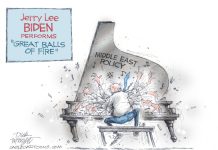One of the most interesting and controversial facets of current immigration law is the EB-5 Immigrant Investor Program, whereby foreign investors (and their immediate families) can acquire lawful permanent resident (LPR) status if they invest $500,000 in a project that creates at least 10 jobs for U.S. workers.
Congress created the EB-5 Program in 1990 to stimulate the U.S. economy through job creation and capital investment by foreign investors.
The U.S. Citizenship and Immigration Services (USCIS — part of the Department of Homeland Security and successor to the Immigration and Naturalization Service) administers the EB-5 program, which is limited to 10,000 conditional visas per year (the condition is lifted once job creation is verified).
In 1992, Congress created the Regional Center Program, which allows investments in projects associated with regional centers approved by the USCIS (currently 838), rather than in specific projects. Regional Centers serve as third-party entities that facilitate the EB-5 process for foreign investors by identifying projects, pooling foreign investments with domestic investments and managing projects.
The original aim of the EB-5 Program was boosting disadvantaged areas by spurring the development of projects that wouldn’t otherwise happen. The stated minimum investment is $1 million, but the threshold is lowered to $500,000 for projects in a “Targeted Employment Area—TEA” (i.e. a rural area or an area experiencing unemployment of at least 150 percent of the national average).
According to a recent report from the Bipartisan Policy Center, “EB-5 Program: Successes, Challenges, and Opportunities for States and Localities,” 97 percent of conditional visas issued in fiscal 2014 were granted through the Regional Center Program, and 98 percent were granted to foreigners investing in TEAs.
The EB-5 program started in 1990 but had little activity until the Great Recession cut-off funding for commercial development. From 806 conditional visas issued as recently as 2007, the 10,000 annual maximum was reached before the end of 2014.
Since developers know foreign investors’ principal motivation under EB-5 is migration, not the return on their investment, they view EB-5 as a source of extremely cheap financing. With a large project, the developer can save tens of millions in financing costs versus conventional borrowing.
The key for a developer is having your project located in a TEA. Here’s where it gets interesting and controversial. Developers are able to stitch together multiple contiguous census tracts to create a TEA. Voila, a $1.7 billion luxury condo project’s gilded neighborhood at the border of New York’s Central Park was magically transformed into a TEA by linking the planned tower to public housing projects in East Harlem.
New Your University real-estate professors Jeanne Calderon and Gary Friedland are the foremost academic experts on EB-5 and published “A Roadmap to the Use of EB-5 Capital” and a database of EB-5 capital projects. The database lists 27 major projects that have sought a total of $5.4 billion in EB-5 financing.
Unlike the original aim of EB-5, all of these projects undoubtedly would have happened anyway. Thus, access to cheap EB-5 financing simply increased the developers’ profits. That’s why critics of EB-5 refer to the creation of artificial TEAs as “gerrymandering” and the program itself as “cash-for-visas.” The “winners” are large coastal cities (like New York, L.A. and Miami) and big name developers foreigners are familiar with. The “losers” are the rural and distressed areas the program was intended to boost.
Mickey Kim is the chief operating officer and chief compliance officer for Columbus-based investment adviser Kirr Marbach & Co. Kim also writes for the Indianapolis Business Journal. He can be reached at 812-376-9444 or [email protected].




